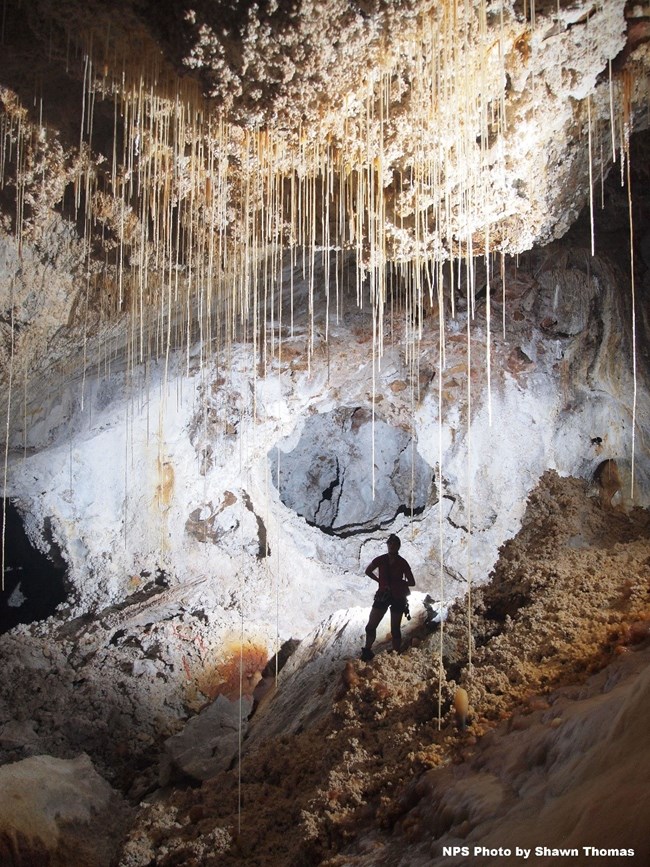Learn about NRCAs
The Natural Resource Condition Assessment (NRCA) Program provides framework, funding, and publishing support to parks to aid in the synthesis and documentation of natural resource conditions. Condition assessment reports are a tool to describe selected park resources, and record a snapshot of their current condition, identify trends, and identify potential or current threats and stressors. Understanding the condition and trend of natural resources is key for parks and NPS planners to appropriately prioritize and allocate stewardship resources.

NPS Photo by Shawn Thomas
Traditional NRCA Report: 2017
In order to better understand the natural resources and processes within Carlsbad Caverns National Park, a Natural Resource Condition Assessment was published in 2017 as a collaborative effort between National Park Service staff and St. Mary’s University of Minnesota. This team chose ten resource topics to be assessed:
- Rattlesnake springs communities |
||
- Seeps and springs |
||
- Bats |
||
- Birds |
||
- Herpetofauna |
||
- Air quality |
||
- Dark night skies |
||
- Infrastructure impacts on caves |
||
- Human impacts on caves |
||
- Groundwater |
None of the components assessed by this review was considered to be in good condition. Two components (birds and dark night skies) were of moderate concern, and three components (Rattlesnake Springs community, air quality, and human impacts on caves) were considered to be of significant concern. For those resources where a current condition could not be assessed due to the lack of data or defined reference conditions, the information presented here may serve as a baseline against which any changes in condition of components in the future may be compared. In general, through the understanding of the condition of these resources, park resource managers can prioritize management objectives and better focus conservation strategies to maintain the health and integrity of park ecosystems.
For other reports and natural resource datasets visit the NPS Data Store.
Source: NPS DataStore Collection 7765 (results presented are a subset). To search for additional information, visit the NPS DataStore.
Last updated: August 15, 2022
